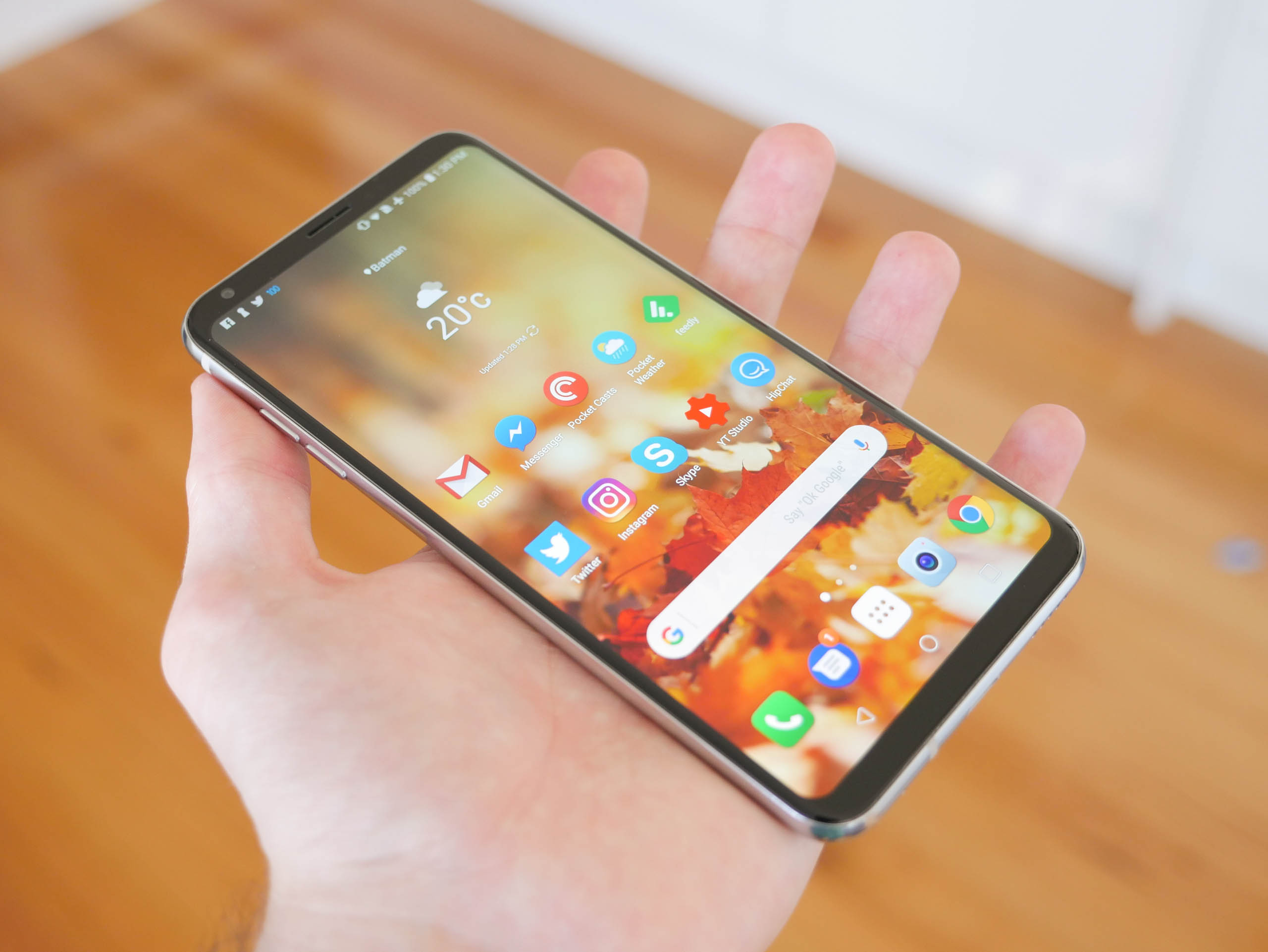Display
There has been a lot of discussion in the last few months about the quality of LG's p-OLED displays, especially relative to Samsung's technology. The V30 uses one of these p-OLED displays, a version that's 6.0-inches 18:9 in size and 2880 x 1440 in resolution. As far as I can tell, this is the very same display (or an extremely close variant) of the panel used in the notorious Google Pixel 2 XL.
I want to stress here that the LG V30's display does not have as many issues as the Pixel 2 XL, even though both handsets appear to use the same screen. That's not to say this display is fantastic, because it's not, but it's not as plagued by issues as the Pixel 2 XL.
The biggest issue with the V30 display is viewing angles. This is the exact same issue as with the Pixel 2 XL: a noticeable blue shift when viewing at off-normal angles. In other words, you'll need to be viewing the panel dead-on to get the best color experience; even a slight deviation from this will introduce the blue tint. Other LCDs and even Samsung's OLEDs do not exhibit the same behaviour, and as most high-end displays tend to have fantastic viewing angles, the sub-optimal experience with the V30 display is certainly disappointing.
The V30 also suffers from uniformity concerns, though not to the same extent as the Pixel 2 XL, at least in my experience with review units of each phone. The upper right corner of my V30 unit has a slight yellow/green tint not present in the rest of the display, but this is not as noticeable as the red tint I saw with my Pixel 2 XL. Still, it's clear LG has some work to do with their OLED tech to ensure a more uniform viewing experience with future iterations. I suspect the uniformity varies quite a bit from unit to unit as well, so returning or swapping a particularly bad unit may give you a better display.
The slight graininess of the Pixel 2 XL's display was not present with my LG V30, instead replaced by faint banding when viewing greys and whites at low brightness levels. This is another issue with LG's p-OLED tech, though to be honest, it's not very noticeable unless you are searching for problems with the display. Most regular users will find the viewing angles and uniformity to be much more visible in everyday usage.
The good news for V30 buyers is that unlike with the Pixel 2 XL, I did not experience any noticeable burn-in during my multi-week review period. LG clearly manages this aspect in a better way through software, or the panel is simple less susceptible to burn in. Either way, it's not a short-term concern.
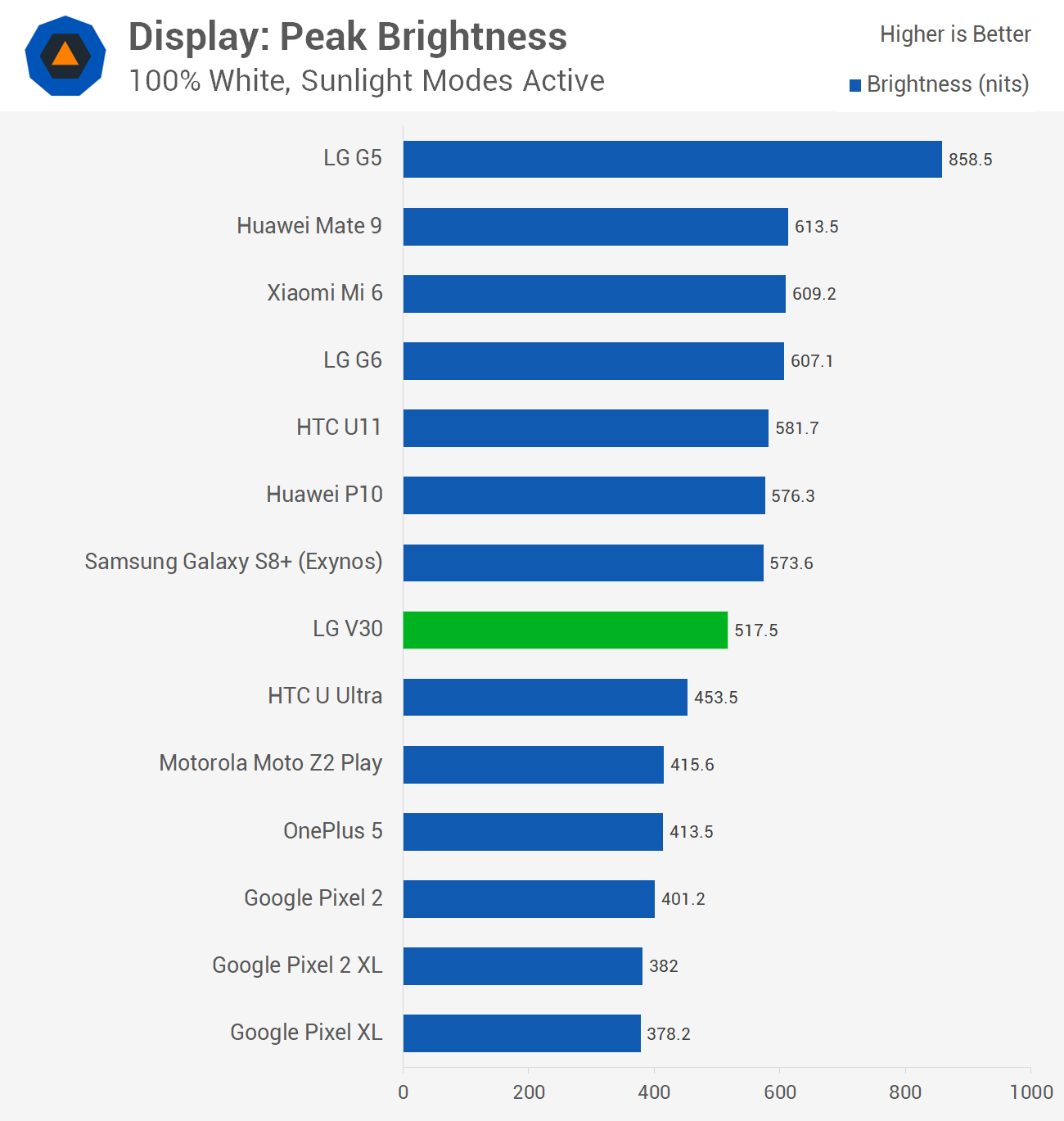
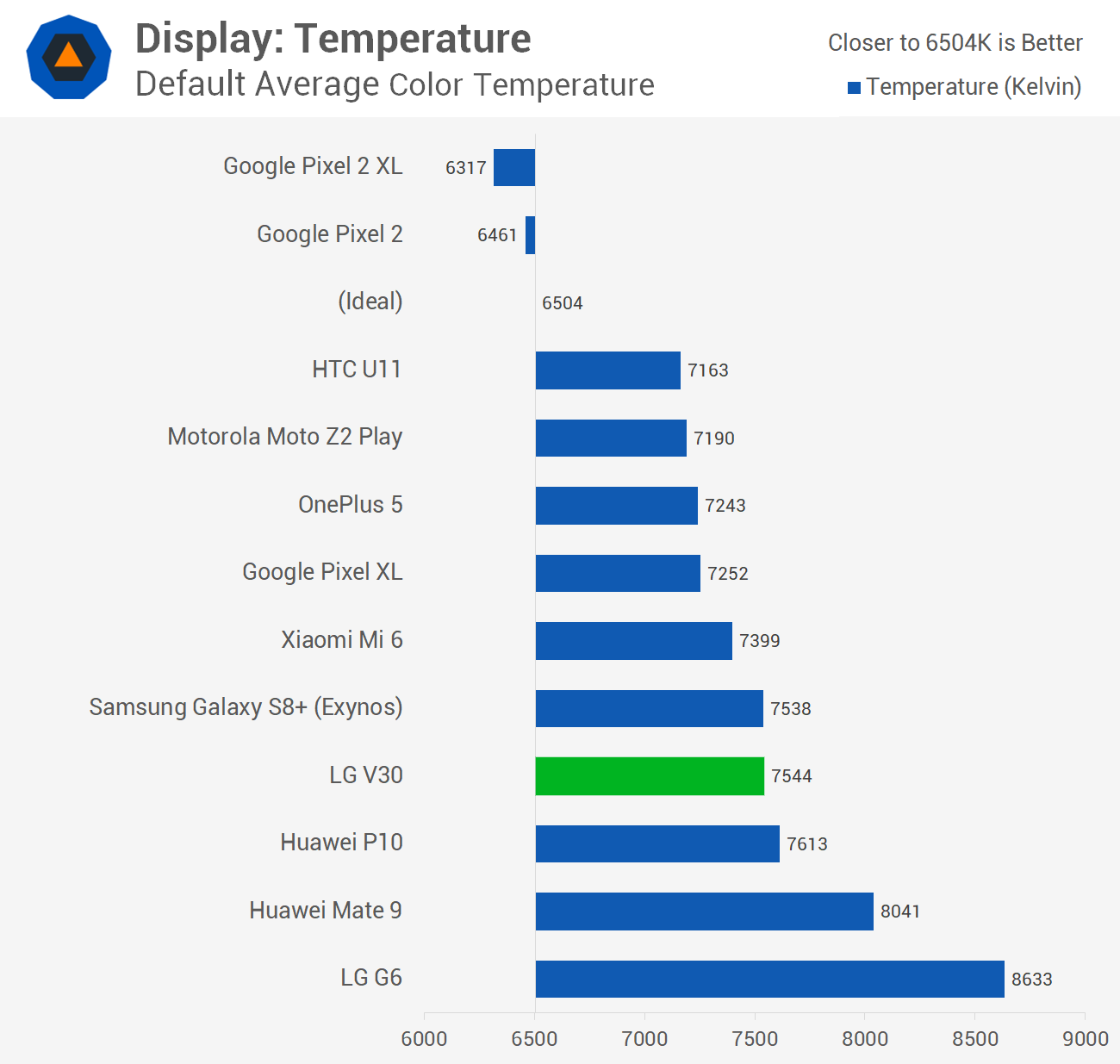
Brightness levels from the V30's display are very good for an OLED, pushing above 500 nits in direct sunlight with automatic brightness enabled. It doesn't push quite as high as Samsung's current-gen OLEDs, but this is one of the better OLED brightness levels I've seen. Blacks are, of course, extremely deep and help deliver an effectively infinite contrast ratio.
The V30 does not include any sort of color management, so the display is extremely oversaturated by default. The display covers 152% of the sRGB gamut, or an impressive 99.9% of the DCI-P3 gamut, though as the phone doesn't support proper color management, everything is significantly oversaturated. This display would be perfect with true DCI-P3 support, but instead we're stuck with stretching sRGB content up to DCI-P3.
This leads to reasonably poor accuracy across the board, in line with what's seen in other oversaturated handsets. Color temperature is cool as well, with an average of 7544K. While this temperature is not accurate, it's far better the yellow tone to the Pixel 2 XL display. The result is a screen that, when compared to the Pixel 2 XL in its 'saturated' mode with the same huge gamut, looks a lot better.

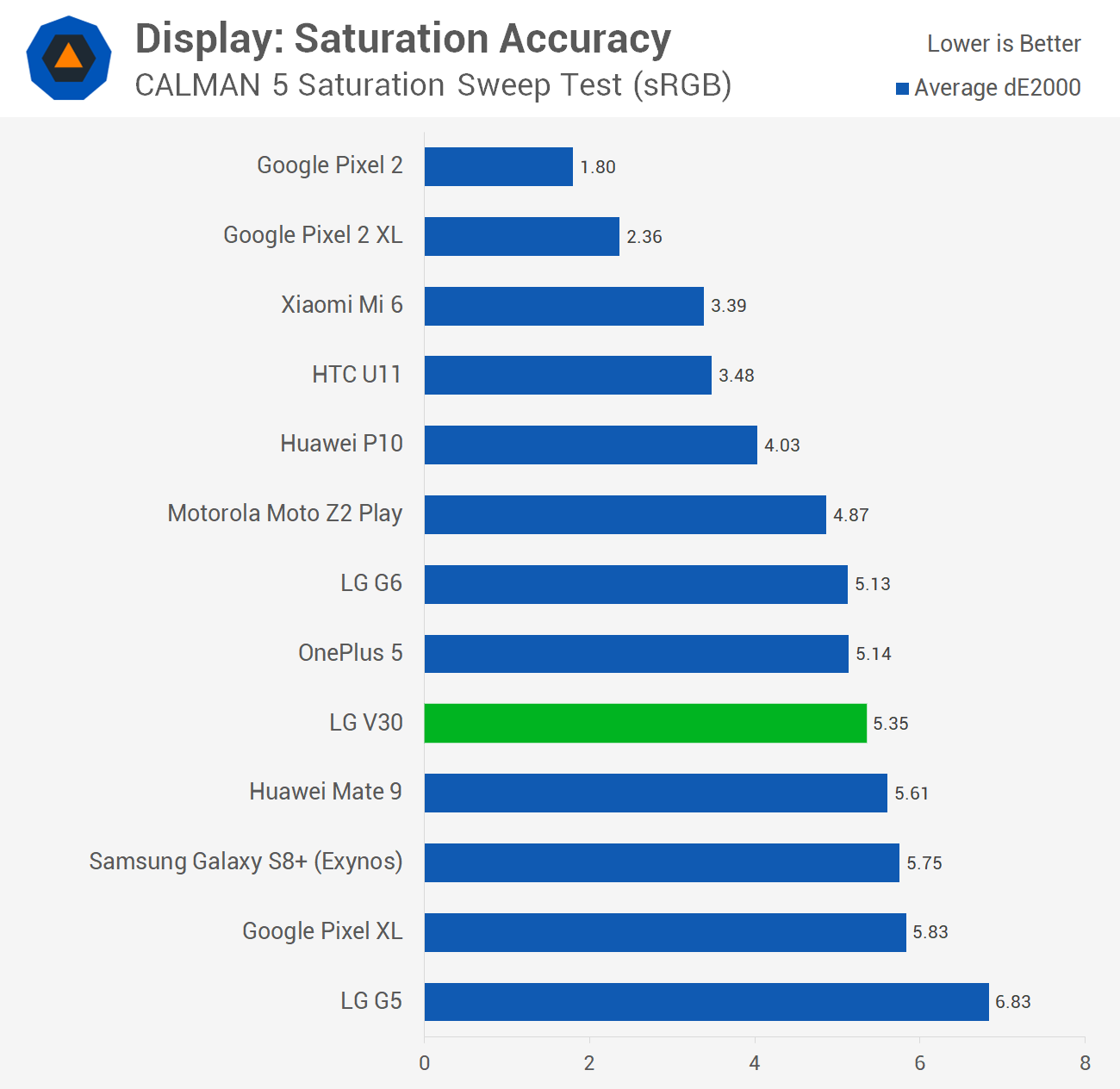
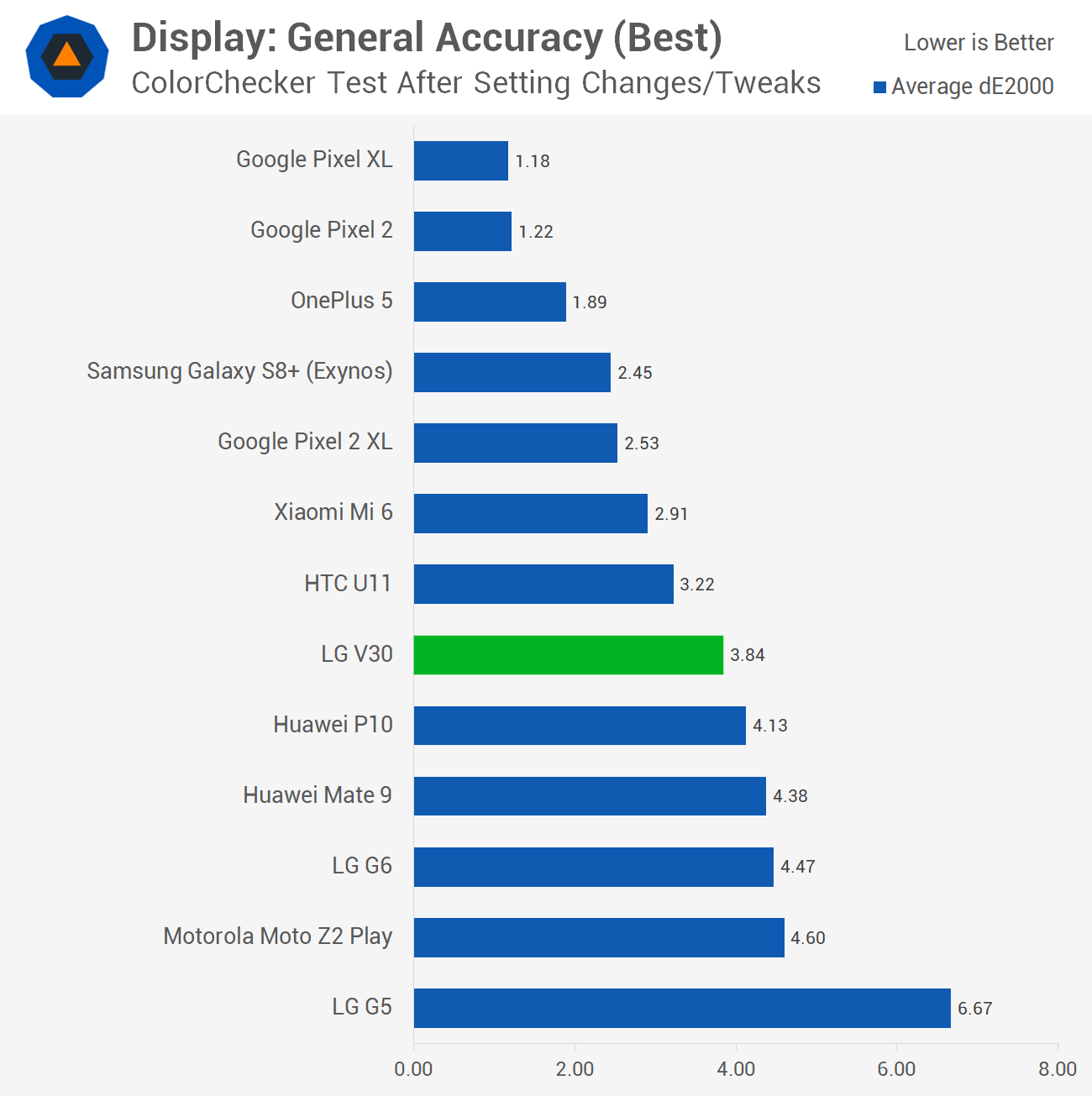
If you want a more accurate look, LG offers several display modes, the best of which is the 'web' mode. While it doesn't magically transform the V30 into an sRGB-accurate panel, it reigns in the gamut to 112% of sRGB, and shifts the color temperature closer to the ideal 6500K mark. It's a solid option, though it doesn't match the quality of the Pixel 2's 'natural' mode.
Oh and the LG V30 supports the HDR10 specification, so if you run in to HDR content, it will display it in its full glory.
